Chicken - More than Meat! (A brief history+fascinating facts)
I'm not sure who writes a blog about chickens, but I do! They are a regular part of my life because I farm and sell them. I know we all want a delicious bowl of crispy fried chicken, but I'm here to tell you some fascinating facts about these adorable little creatures.
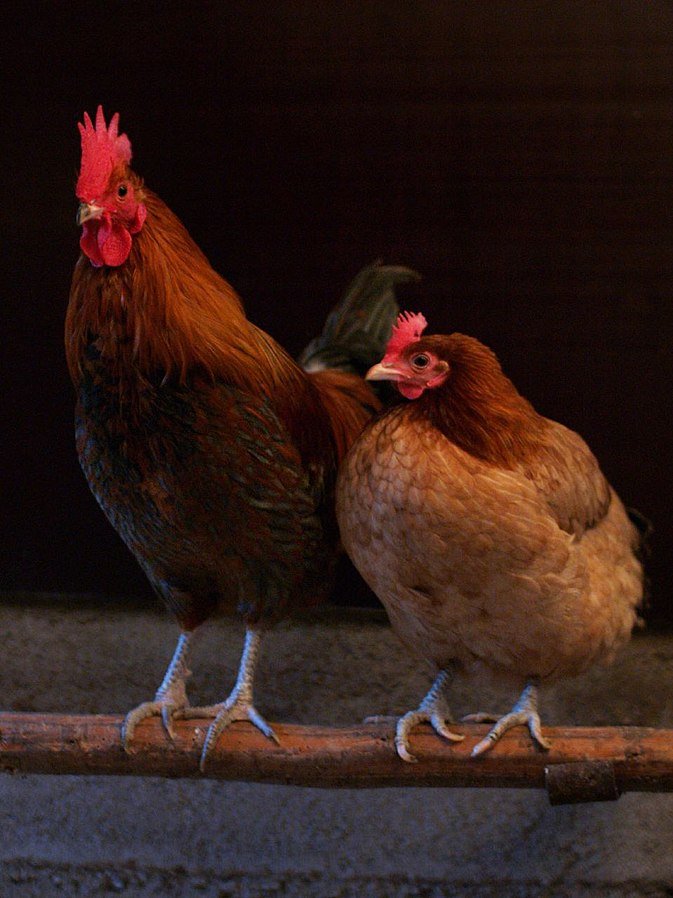
A cock and a hen roosting together; Author-Andrei Niemimäki; Source
Thutmose III, an ancient Egyptian king, famously described the chicken as a wonderful foreign bird that gives birth on a regular basis. They were regarded as spirits by the Zoroastrians, whose screams revealed the cosmic conflict between darkness and light, while the Romans used them to predict the outcome of future battles. This bird still holds a significant, albeit less dignified, place on our dinner plates today.
The red jungle fowl and three other closely similar species, all endemic to India and Southeast Asia, are the primary ancestors of the modern chicken.
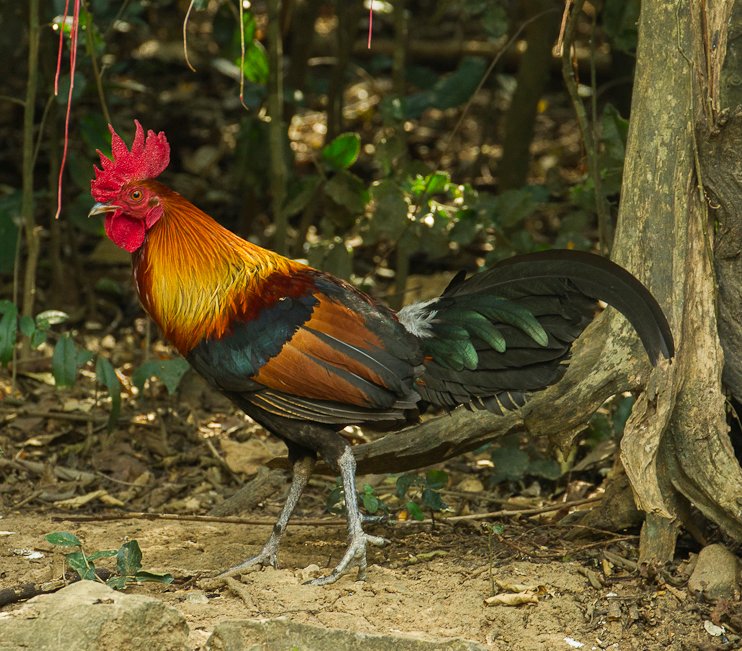
Author: Francesco Veronesi; Source
The bamboo plants in the area only produce large volumes of fruit once every several decades. The ability of jungle fowl to lay eggs on a daily basis may have developed to take advantage of these unusual feasts, allowing them to increase their number when food was plentiful. Humans could take advantage of this on a regular basis, and the birds' restricted flight capabilities and space requirements made them simple to capture and confine.
Cockfighting was a popular form of amusement for the first domesticated chickens, which date back at least 7000 years ago.

Cockfight in London, c. 1808; Author-Thomas Rowlandson (1756–1827); Source
The aggression of breeding males, armed with their natural claws, made cockfighting a popular form of entertainment. Chickens had expanded from the Indus valleys to China and the Middle East by the second millennium BC, occupying imperial mangeries and being employed in religious rites. The next chapter in the bird's history, however, began in Egypt.
When a hen incubates eggs naturally, she stops laying new ones and sits on a clutch of six or more for twenty-one days. By the middle of the first millennium b.c.e., the Egyptians had learned to artificially incubate chicken eggs by placing them in baskets over hot ashes, allowing hens to continue laying every day. What was once a regal delicacy or a sacred offering became a regular meal over time.
Chickens were introduced to Europe by Phoenician merchants at the same time as Egyptians started incubating eggs, and they quickly became an important part of European livestock. For a long time, though, the hens' esteemed status coexisted with their cullinary one. Fighting roosters were utilized by the ancient Greeks as role models for young soldiers. Chickens were used as oracles by the Romans, and the chicken was regarded as a Christian emblem as late as the 7th century.
Over the next few centuries, chickens accompanied humans wherever they went, spreading around the world through trade, conquest, and colonization. Chinese breeds were introduced to England after the opium wars and mixed with indigenous chickens. Farmers all over Europe tried to breed new kinds with specific combinations of trades, resulting in a condition known as "hen fever" or "the fancy," with farmers all over Europe attempting to breed new types with specific combinations of crafts.
This trend also attracted the attention of Charles Darwin, who pondered whether nature had a similar selective breeding mechanism. While finishing his momentous study, Darwin would observe hundreds of chickens, introducing the theory of evolution. The chicken's most significant contribution to science, however, was yet to come!
A group of British scientists did considerable cross-breeding of chickens in the early twentieth century, based on G. Mendel's research on genetic inheritance. Chickens were the ideal topic since they had a lot of genetic variation, a lot of different features, and just seven months between generations!
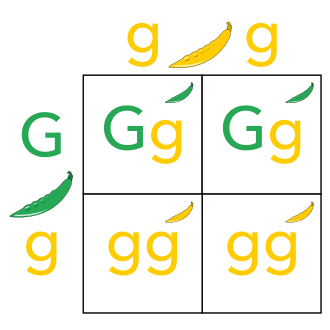
An example of a Punnett square
In this example, in peas, the color green in unripe pods is determined by the dominant allele G and the color yellow in unripe pods is determined by a recessive allele g; Source
The renowned "Punnett Square" was created as a result of this work, and it was used to demonstrate the genotypes that would occur from breeding a given couple. Several breeding programs have since grown hens bigger and meatier, allowing them to lay more eggs than ever before.
Meanwhile, chicken production has evolved to a factory-like paradigm, with the birds being grown in spaces no bigger than a sheet of paper.
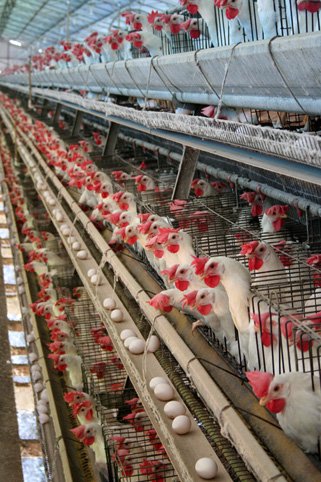
Hens in battery cages; Source
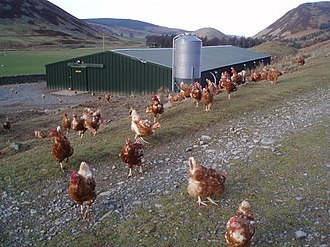
Commercial free-range hens; Author-Adam Ward; Source
While there has been a shift toward free-range farming due to animal rights and environmental concerns, over twenty-two billion chickens are still factory-farmed today in the majority of the world!
Chickens have served as gladiators, gifts to the gods, traveling companions, and research subjects throughout history. Chickens' intriguing past also informs us a lot about our own history, even if they didn't come before the traditional egg. So, how's it doing with the chickens? I'm curious as to what they think of it all. So, I'll have to go ask them and get back to you all as soon as possible. :)
To all hivers, have a great weekend! When you're eating that delicious piece of chicken meat or frying an omelet egg, keep in mind the intriguing narrative regarding chickens. More posts from your favorite farm girl are on the way! Thank you for taking the time to read this.
Read more here:
How the Chicken Conquered the World
Red junglefowl
The Forgotten History of ‘Hen Fever’
Punnett's Square
Poultry Farming
Posted from HypeTurf
We appreciate your work and your post has been manually curated by zoology team (oscurity,nelinoeva) on behalf of Amazing Nature Community. Keep up the good work!
thank for sharing
This is an interesting topic, thanks for sharing!
We appreciate your work and your post was manually curated by @none! from the DNA team!
Reach us on Discord to learn more about the project!
Congratulations @naisfarms! You have completed the following achievement on the Hive blockchain and have been rewarded with new badge(s):
Your next target is to reach 100 upvotes.
You can view your badges on your board and compare yourself to others in the Ranking
If you no longer want to receive notifications, reply to this comment with the word
STOPCheck out the last post from @hivebuzz:
Support the HiveBuzz project. Vote for our proposal!